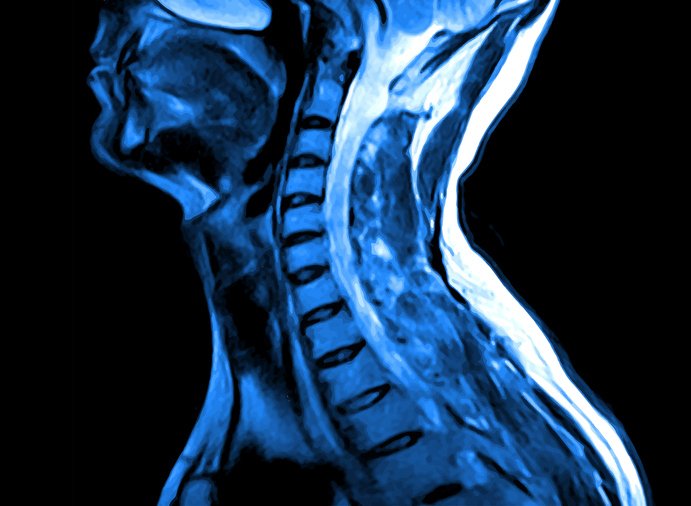Stem cells can help repair spinal cord after injury

Spinal cord injury often leads to permanent functional impairment. In a new study published in the journal Science researchers at Karolinska Institutet show that it is possible to stimulate stem cells in the mouse spinal cord to form large amounts of new oligodendrocytes, cells that are essential to the ability of neurons to transmit signals, and thus to help repair the spinal cord after injury.
The spinal cord conveys signals from the brain to the rest of the body and spinal cord injury often leads to a degree of paralysis as some nerve fibers become transected and others, while intact, operate less efficiently. This impaired function is often caused by the loss of oligodendrocytes, a type of insulating cell that facilitates neuronal signalling.
In many organs, damaged tissue can be repaired by stem cells that create the cell types that have been lost. There are stem cells in the adult spinal cord, but these give rise primarily to scar forming cells after an injury. The scar tissue limits the extent of the damage but does not contribute to the replacement of lost cells.
Not locked into forming scar tissue
In the current study, the researchers carefully characterised spinal cord stem cells at a genetic level in mice, and found that the stem cells’ DNA was receptive to signals that stimulate the formation of new oligodendrocytes.

“We found that the stem cells were not locked into forming scar tissue and understood how we could nudge them in another direction to also form cells that contribute to repair,” says the study’s first author Enric Llorens-Bobadilla, researcher at the Department of Cell and Molecular Biology at Karolinska Institutet.
By controlling which genes were activated in the stem cells, the researchers were able to stimulate an abundant generation of new oligodendrocytes, which led to improved nerve fibre function in the damaged spinal cord.
New strategy for stimulating repair

“This shows that it’s possible to affect stem cells in the nervous system so that they contribute more to functional recovery,” says principal investigator Jonas Frisén, professor at the Department of Cell and Molecular Biology, Karolinska Institutet. “Although the studies were done in mice and are not directly translatable to humans, they indicate a conceptually new strategy for stimulating repair after damage to the nervous system.”
The study was supported by the Human Frontiers Science Programme long-term fellowship, a Marie Sklodowska-Curie Action fellowship, and grants from the Swedish Research Council, the Swedish Cancer Society, the Swedish Foundation for Strategic Research, the Knut and Alice Wallenberg Foundation, the Strategic research area in stem cells and regenerative medicine at Karolinska Institutet (StratRegen), St. Petersburg University, Karolinska Institutet, the Torsten Söderberg Foundation, and the Wings for Life Spinal Cord Research Foundation. Four of the authors, including Enric Llorens-Bobadilla and Jonas Frisén, are consultants to the biotechnology company 10X Genomics, and one of the authors is currently employed by 10X Genomics.
Publication
“A latent lineage potential in resident neural stem cells enables spinal cord repair”. Enric Llorens-Bobadilla, James M. Chell, Pierre Le Merre,Yicheng Wu, Margherita Zamboni, Joseph Bergenstråhle, Moa Stenudd, Elena Sopova, Joakim Lundeberg, Oleg Shupliakov, Marie Carlén, Jonas Frisén. Science, online 1 October 2020, doi: 10.1126/science.abb8795.
